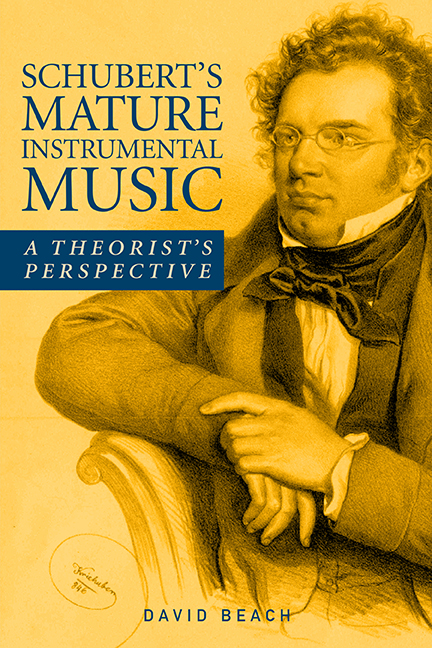Summary
My interest in the music of Franz Schubert and others dates back to my youth when I would play my parents’ records—the old 78s—over and over. There were only a few recordings: Mozart's Symphony no. 40, Beethoven's Fifth Symphony, and Schubert's “Unfinished” Symphony (which perhaps explains my fondness for the minor mode!), plus short works by Wagner, Khachaturian, and Shostakovich. That was my musical universe, except for the radio, until my seventh-grade year, when I was fortunate to be enrolled in a music appreciation course. Now skip ahead to the 1980s, when I had a term leave from my teaching duties at the Eastman School of Music. This is when I began to study in depth works by Schubert, particularly the late chamber music. The results of this work over the years are the articles listed under my name in the bibliography. This project draws on this material, while adding much that is new, and presents it in a different way.
There has been quite a swell of interest in Schubert's music in recent years, resulting in several books and articles that are listed in the bibliography. Some of these works—here I am thinking of Suzannah Clark's Analyzing Schubert (Cambridge: Cambridge University Press, 2011) and Susan Wollenberg's Schubert's Fingerprints: Studies in the Instrumental Works (Farnham, UK: Ashgate, 2011)—are written from a very different perspective than mine. The primary value of Clark's book, at least from my perspective, is her survey and critique of the biographical and theoretical literature about Schubert and his music from his time to the present. She draws on numerous contemporary sources in her observations, but she does so without presenting a coherent concept of the music. Wollenberg's book, on the other hand, focuses more on the music and offers numerous musical examples. Its value—again, from my perspective—lies in the observations the author makes about the characteristics of Schubert's style (e.g., modal mixture, portrayal of violence, construction of themes, etc.). The work that is closest to mine is David Damschroder's Harmony in Schubert (Cambridge: Cambridge University Press, 2010). Like this work, Damschroder's is divided into two parts, the first outlining the author's approach and the second presenting a series of analyses. However, there are significant differences.
- Type
- Chapter
- Information
- Schubert's Mature Instrumental MusicA Theorist's Perspective, pp. vii - xPublisher: Boydell & BrewerPrint publication year: 2017

